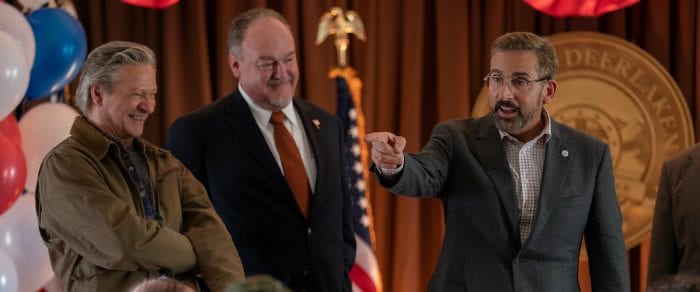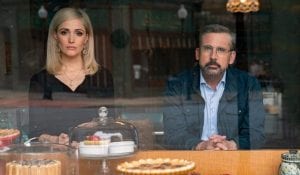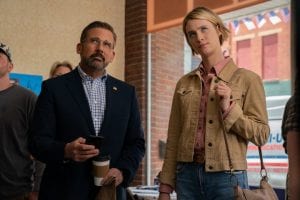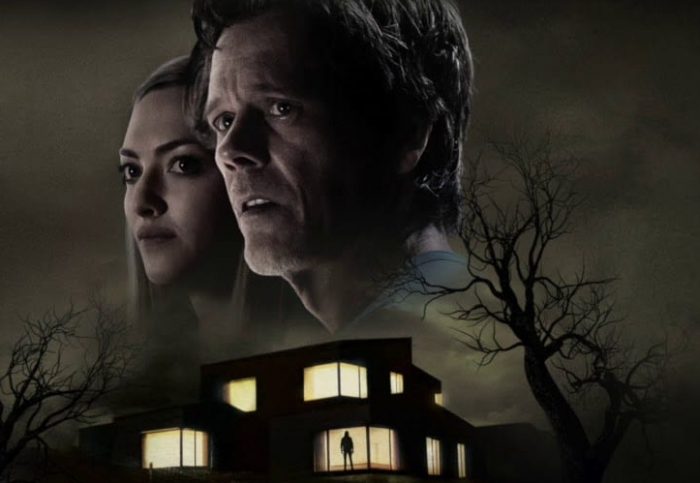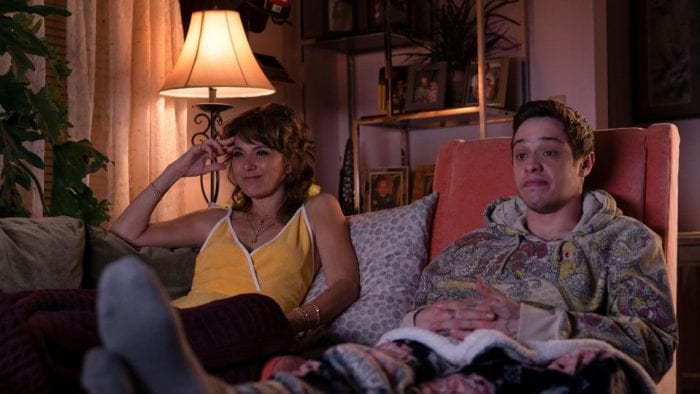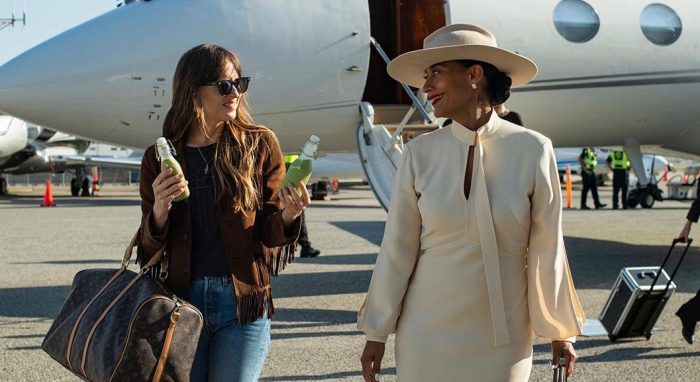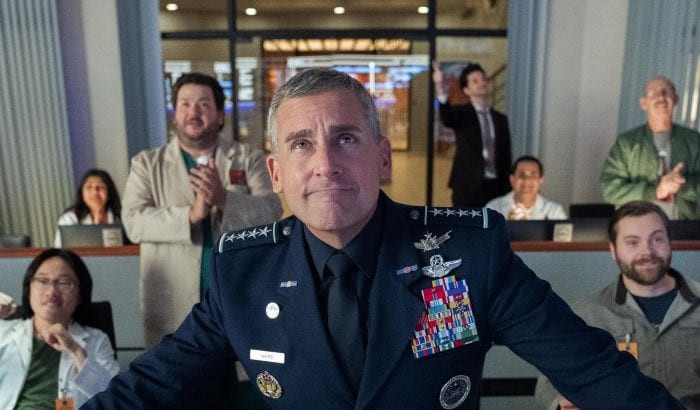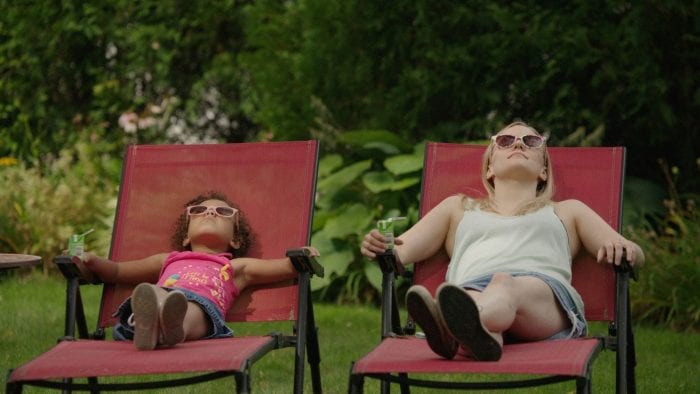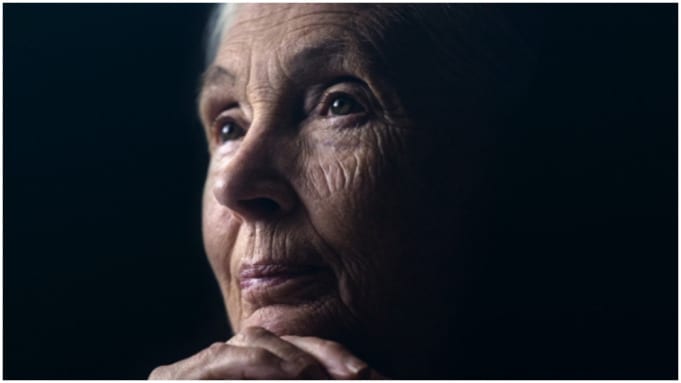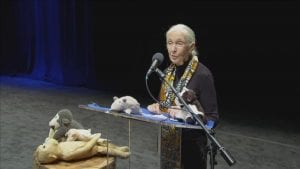Reviewed by Jeffrey Sanzel
First-time director Natalie Erika James takes a new spin on the possessed residence genre with the atmospheric psychological horror film, Relic. James has co-written the heady screenplay with Christian White, and the result is ninety minutes of introspective dread that are grounded more in family than in fright. Relic had a buzzy debut at Sundance last year; it is equally arthouse and haunted house.
Three generations of women confront the dark but unexplained spirits possessing their family. When the elderly Edna (Robyn Nevin) disappears for three days and then suddenly reappears without explanation, daughter Kay (Emily Mortimer) and granddaughter Sam (Bella Heathcote) respond differently to the older woman’s erratic behavior.
The core of Relic is the portrait of a dysfunctional family staring down its matriarch’s slip into dementia. What is revealed is that years before, Edna’s grandfather suffered a fate similar to Edna’s. He died alone in a cabin on the property — the first structure put up on the land. (Kay has visions of both the old man and the cabin.) And while it no longer exists, pieces of it had been incorporated into the existing house, most notably the stained glass window now found in the front door.
It is as if the evil that destroyed the man followed it into the house, biding its time to possess its owner, in this case, Edna. But is it evil or illness? The answer is both.
While there are many traditional images, they feel fresh in James’s hands. In the opening moments, the house “breathes.” While an overflowing bathtub is a well-known trope, there is something about the water’s flow down the stairs that sets the tone for what will be the film’s creeping malevolence.
Initially, the house itself looks benign and suburban, if a bit cluttered. Yes, it is large and well-appointed, but this is not a caricature of the old dark house, and this is a very different kind of haunting. The black mold appears to be an insidious manifestation of the dementia, and it is consuming the family homestead.
At first, Edna seems to have a bruise on her chest. In actuality, the same mold is overrunning house and body. The possession is a slow poison that hovers around the edges before taking over; the metaphor is clear. Scattered around the house are Edna’s notes to herself — ranging from the simple “Flush” to the alarming “Don’t let it in.”
The layers and twists are neatly woven, alternating between the ever weakening bond between Edna and Kay and the malign forces that are present. The fact that they are joined makes the film unique as it is impossible to disconnect one from the other. The evil dwelling in the house is just as real as what has clearly been a disintegration of Edna’s mind.
This is a film that allows the narrative to slowly unravel. The scenes are short with staccato dialogue but the tempo remains at a slow burn for a majority of the time. It does not rely on gore or even visual scares. Instead, it allows us to peer into the shadows, unsure of what they — or we — are seeing.
It helps that all three actors — Mortimer, Nevin, and Heathcote — give understated and grounded performances. Nevin’s descent into confusion is marked by flashes of anger and disturbing behavior. There is a moment where she wanders away from the house and attempts to eat photographs before trying to bury the album itself. Wide-eyed, she looks at her daughter and cries, “Where is everyone?” It is a moment that is both horrifying and heart-breaking.
Mortimer’s struggle with ambivalence and obligation are palpable. Her love is mixed with resentment. She shows equal amounts of frustration and hurt in witnessing her mother’s desolation. Heathcote strikes the right balance in trying to be a loyal daughter and an attentive granddaughter. She also makes the climax (an extended sequence lost in the house’s impossible labyrinth) a showpiece in discovery. Both the spoken and unspoken pain and disappointment of this trio build the narrative.
Cinematographer Charlie Sarroff has effectively desaturated the color to the point of almost being absent. Robert Mackenzie’s eerie sound design — with ambient noise tamped down or oddly amplified — greatly enhances the off-kilter world. The distorted sounds of an empty washing machine and the gunshot bang of a bolt into a lock are jarring in just the right (wrong?) way.
For those looking for something different in the genre, Relic is an evasive but mysterious tale, cleverly flying in the face of traditional horror movie expectations. It masterfully blends many of the everyday fears for our loved ones with darker forces. Give it the time and it will stay with you long after its bizarre final moments.
Rated R, Relic is now streaming On Demand.

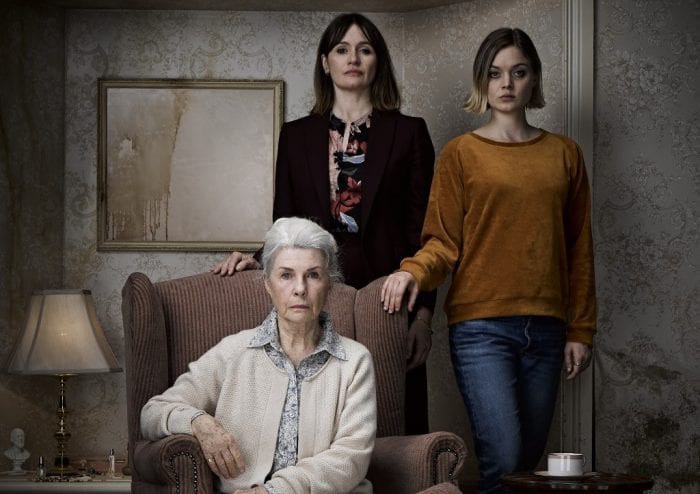
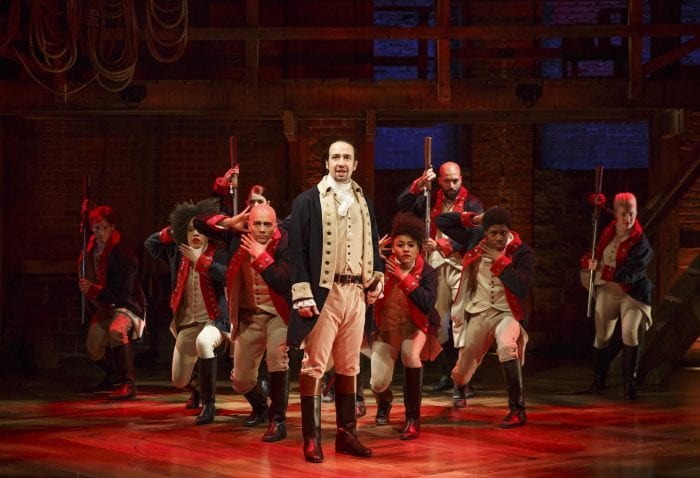
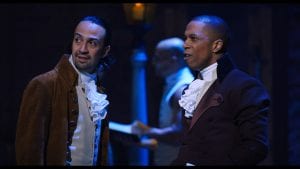 Hamilton: An American Musical (its full title) is the sole creation of the unparalleled Lin-Manuel Miranda who had already risen to prominence with his In the Heights. Miranda used the Ron Chernow biography Hamilton (2004) as his source, but this is no traditional musical biopic. With his unique book, music, and lyrics, he has fashioned a celebration unlike any other, and in doing so, has redefined what theater can be.
Hamilton: An American Musical (its full title) is the sole creation of the unparalleled Lin-Manuel Miranda who had already risen to prominence with his In the Heights. Miranda used the Ron Chernow biography Hamilton (2004) as his source, but this is no traditional musical biopic. With his unique book, music, and lyrics, he has fashioned a celebration unlike any other, and in doing so, has redefined what theater can be. Over the years, there have been various attempts to bring the experience of live theater to television with varying success. The American Playhouse presentation of Into the Woods (1991) was one of the stronger examples, featuring the show’s original cast. The Public Theatre’s presentation of The Apple Plays, composed of four plays by Richard Greenburg, worked extremely well. It’s interesting to note that a fifth Zoom/COVID play presented in April — without an audience — was the best of all of them.
Over the years, there have been various attempts to bring the experience of live theater to television with varying success. The American Playhouse presentation of Into the Woods (1991) was one of the stronger examples, featuring the show’s original cast. The Public Theatre’s presentation of The Apple Plays, composed of four plays by Richard Greenburg, worked extremely well. It’s interesting to note that a fifth Zoom/COVID play presented in April — without an audience — was the best of all of them. One of the treasures of this recorded Hamilton is that it preserves the original company. And this cast is exceptional: a group of young (only two casts members were even in their forties) and astoundingly talented singer/dancer/actors execute a story with not only precision and commitment but unparalleled joy.
One of the treasures of this recorded Hamilton is that it preserves the original company. And this cast is exceptional: a group of young (only two casts members were even in their forties) and astoundingly talented singer/dancer/actors execute a story with not only precision and commitment but unparalleled joy.